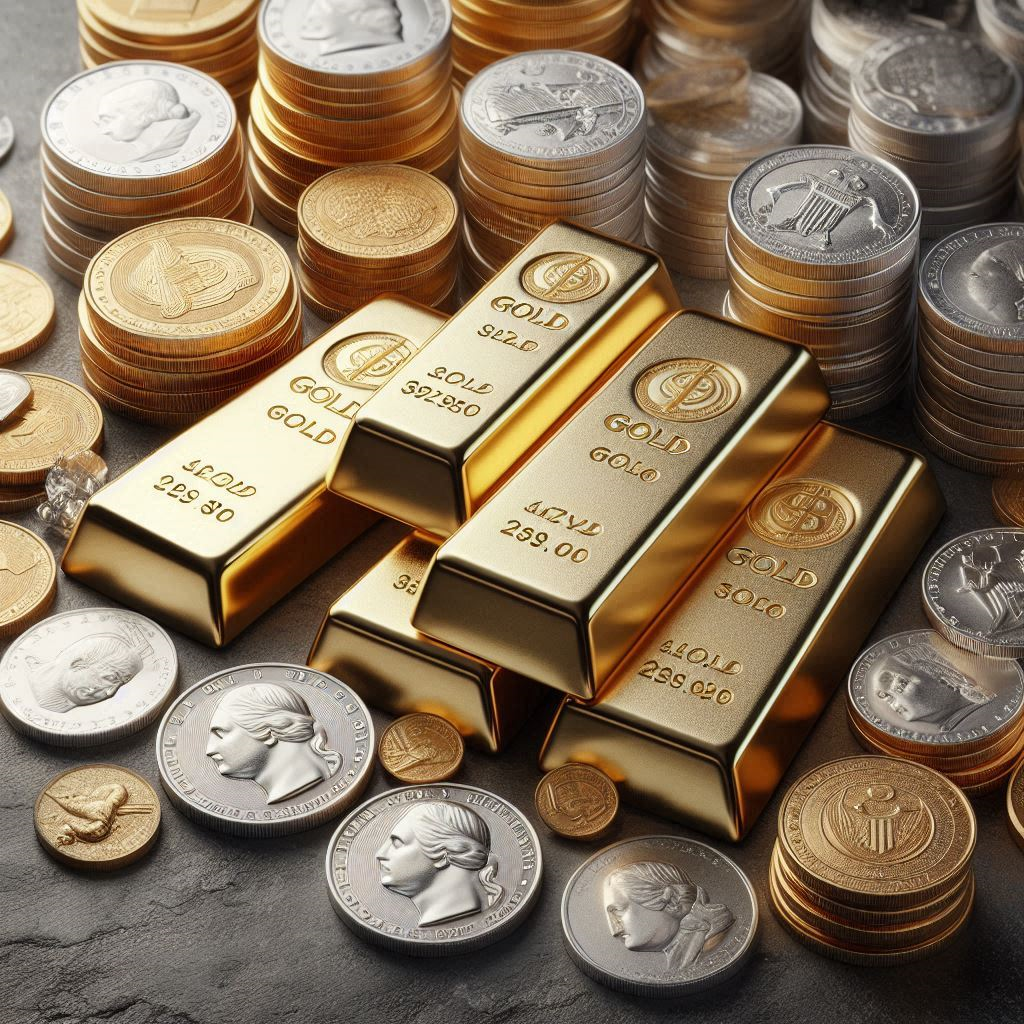Gold Prices Slip on Inflation Data
On Wednesday, gold prices fell as the US dollar and Treasury yields gained strength. This dip in gold prices came in response to US inflation data, which caused investors to scale back hopes of an aggressive rate cut by the Federal Reserve next week. With inflation remaining sticky, many now predict a smaller rate reduction.
Inflation Data Impact – Spot Gold and US Futures Down
Spot gold dropped by 0.4%, trading at $2,505.17 per ounce. In the futures market, US gold prices were down by 0.3%, falling to $2,535.2. The decline in gold prices followed the release of consumer price data, which shifted market sentiment.
At the same time, the US dollar index edged up by 0.1%. Treasury yields also moved higher, with the 10-year benchmark rising slightly. These factors exerted pressure on bullion, driving prices down.
 Gold Prices Dip – Inflation Data Shapes Rate Cut Expectations
Gold Prices Dip – Inflation Data Shapes Rate Cut Expectations
US consumer prices showed only a slight rise in August, but underlying inflation remained persistent. This led to reduced optimism for a significant rate cut from the Federal Reserve. Investors had previously speculated on the possibility of a 50-basis-point cut. However, after the release of the inflation data, those expectations were tempered.
According to Bob Haberkorn, senior market strategist at RJO Futures, the inflation outlook may limit the Fed’s options.
“Inflation is still here. The consumer is still feeling it. If they do a half, it signals they’re throwing in the towel here … a quarter point is something that they’re almost forced into doing here at this point.”
Market Sentiment Adjusts to Smaller Rate Cut
Market participants, following the data release, now largely expect a 25-basis-point rate cut at the Fed’s upcoming meeting. According to the CME FedWatch tool, there is now an 85% chance of a 25-basis-point cut, compared to a 71% likelihood before the inflation report.
Looking ahead, the Federal Reserve is expected to lower interest rates by 25 basis points at each of the remaining policy meetings in 2024. This forecast comes from a Reuters poll, where most economists expect no more than a 25-basis-point cut next week. Only a minority of nine out of 101 economists predicted a half-point reduction.
Tai Wong, an independent metals trader based in New York, noted that the inflation data had cemented the market’s expectations for a modest cut.
“The uptick in core CPI has more or less cemented a 25 bps cut next week. A new all-time high (for gold prices) may have to wait just a little longer.”
Looking Ahead: Jobless Claims and Producer Price Index
Investors will now shift their focus to other key economic indicators. On Thursday, the US producer price index and initial jobless claims data are set to be released. These reports could provide further insight into the Fed’s decision-making process and its approach to future rate cuts.
The direction of gold prices may hinge on how these data points influence market sentiment. Stronger-than-expected numbers could bolster the case for more modest rate cuts, which may further weigh on gold prices.
 Broader Impact on Other Metals
Broader Impact on Other Metals
The decline in gold prices also had a ripple effect across the metals market. Spot silver fell by 0.4%, trading at $28.2635 per ounce. Despite this dip, other precious metals saw modest gains.
Platinum prices rose by 0.2%, reaching $939.85 per ounce. Palladium experienced a more substantial increase, firming by 2.6% to $989.75 per ounce. These metals, while not directly affected by the Fed’s rate decision, remain sensitive to broader market conditions, including inflation data and economic growth forecasts.
Fed’s Next Move in Focus
As inflation continues to show resilience, the Federal Reserve faces mounting pressure to make careful decisions regarding interest rates. Gold prices, which had been buoyed by hopes of aggressive cuts, may remain under pressure in the near term.
While the market now expects smaller rate reductions, the focus will remain on key economic reports and their potential influence on Fed policy. With the producer price index and jobless claims data due, traders will be watching closely to gauge the next moves in both the gold market and broader financial markets.
Gold, like other assets, will continue to react to the ebb and flow of economic data and shifting market expectations. Investors will need to stay attuned to any changes in sentiment, particularly as inflation remains a critical factor for the Federal Reserve’s policy decisions.
Chart by Trading View
Source: CNBC

